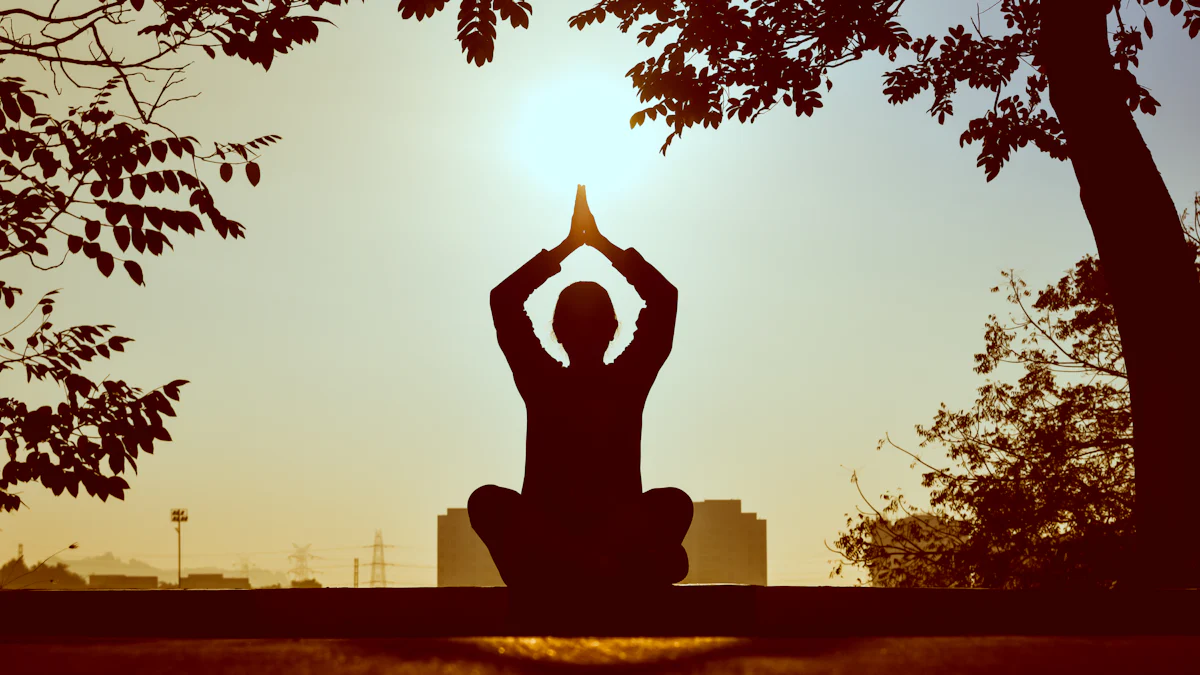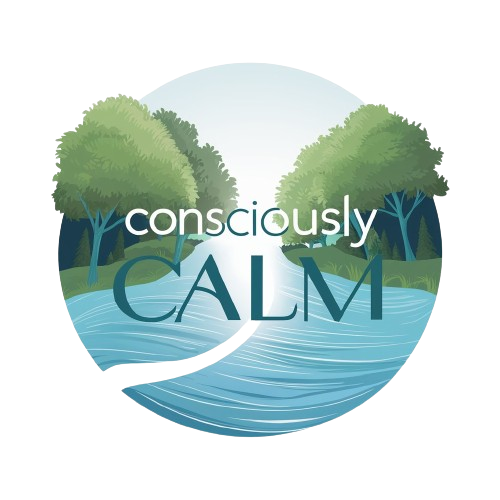Relaxation techniques

Relaxation techniques play a crucial role in daily life. These practices significantly enhance personal well-being and self-care. More than 1 in 5 individuals with insomnia utilize relaxation methods annually, showcasing their effectiveness. Techniques like deep breathing, progressive muscle relaxation, and guided imagery reduce anxiety and depression. Health professionals recommend these strategies to lower cortisol levels and alleviate stress. Incorporating relaxation into your routine can transform your health journey. Embrace relaxation for a healthier, more balanced life. August marks a perfect time to start this transformative journey.
Understanding Relaxation and Stress
What is Relaxation?
Definition and Significance
Relaxation involves calming the mind and body. This practice helps reduce stress and enhances overall well-being. Many people use relaxation to improve focus and boost energy. Techniques like deep breathing and meditation promote a sense of peace. Health professionals recommend relaxation for its positive impact on mental health.
Common Misconceptions
Some believe relaxation requires a lot of time. Others think only certain people can benefit. Everyone can practice relaxation, even with a busy schedule. Simple techniques fit into daily routines. Relaxation does not mean laziness. It actively supports health and productivity.
Benefits of Relaxation
Physical Health Benefits
Relaxation lowers blood pressure and reduces muscle tension. Techniques like progressive muscle relaxation improve circulation. The body heals better when relaxed. Regular practice strengthens the immune system. Many studies show relaxation decreases physical symptoms of stress.
Relaxation techniques reduce anxiety and depression. Practices like guided imagery create mental calmness. Many find improved concentration and memory through relaxation. The mind becomes clearer and more focused. Relaxation supports mental health benefits and emotional resilience and stability.
Relaxation techniques reduce anxiety and depression. Practices like guided imagery create mental calmness. Many find improved concentration and memory through relaxation. The mind becomes clearer and more focused. Relaxation supports emotional resilience and stability.
Emotional Well-being
Relaxation fosters a positive mood and emotional balance. Techniques help manage anger and frustration. Many people experience increased happiness and satisfaction. Emotional well-being improves relationships and social interactions. Relaxation encourages a joyful and fulfilling life.
Popular Relaxation Techniques for Stress Relief

Breathing Exercises
Deep Breathing
Deep breathing offers a powerful way to manage stress. This technique involves taking slow, deep breaths to calm the mind and body. Studies show that deep breathing increases attention and reduces negative feelings. The Harvard Heart Letter highlights how deep breathing lowers cortisol levels, promoting relaxation. You can practice this by inhaling deeply through the nose, holding the breath, and then exhaling slowly through the mouth. This simple stress relief technique can be done anywhere.
Diaphragmatic Breathing
Diaphragmatic breathing focuses on using the diaphragm to breathe more efficiently. This method enhances oxygen flow and reduces tension. Many find diaphragmatic breathing effective for stress management. The Harvard Medical School Special Health Report emphasizes its benefits for emotional well-being. To practice, lie down and place a hand on the chest and another on the abdomen. Breathe deeply so the abdomen rises, while the chest remains still. This calming breathing technique helps you relax and improve focus.
Meditation
Mindfulness Meditation
Mindfulness meditation encourages you to stay present in the moment. This practice reduces anxiety and enhances mental clarity. Harvard Health Publishing provides insights into how mindfulness meditation supports emotional balance. Focus on your breath and observe thoughts without judgment. Regular practice fosters a peaceful mind and a healthier outlook.
Guided Meditation
Guided meditation involves listening to a narrator who leads you through a meditative experience. This method helps beginners focus and relax. Many use guided meditation to visualize peaceful scenes and release stress. The School Special Health Report notes its effectiveness in promoting mental calmness. Choose a quiet space, listen to a guided session, and let the mind unwind.
Progressive Muscle Relaxation
Step-by-step Guide
Progressive muscle relaxation involves tensing and relaxing different muscle groups. This technique relieves physical tension and promotes relaxation. Start by tensing muscles in the feet, hold for a few seconds, and then release. Move up the body, focusing on each muscle group. This practice enhances awareness of bodily sensations and reduces stress.
Tips for Effectiveness
For best results, practice progressive muscle relaxation in a quiet environment. Consistency is key to experiencing benefits. Set aside time daily to engage in this exercise. Harvard Medical School suggests combining it with other relaxation techniques for improved health outcomes. Remember to breathe deeply and maintain focus throughout the process.
Yoga and Stretching
Basic Yoga Poses
Yoga offers a path to relaxation and balance. Practicing yoga helps you connect the mind and body. Simple poses can bring peace and calmness. The Mountain Pose stands as a foundation. Stand tall with feet together and arms by your side. Focus on breathing deeply and feeling grounded. Another pose, the Child's Pose, provides rest and relaxation. Kneel on the floor, sit back on the heels, and stretch arms forward. Breathe slowly and let tension melt away.
The Cat-Cow Pose enhances flexibility and reduces stress. Start on hands and knees, arch the back for the cat pose, then dip the spine for the cow pose. This movement improves spinal health and promotes relaxation. The Tree Pose builds balance and concentration. Stand on one leg, place the other foot on the inner thigh, and raise arms overhead. Focus on steady breathing and maintaining balance. These basic poses create a foundation for relaxation and well-being.
Stretching Exercises
Stretching exercises offer a simple way to release tension. Regular stretching increases flexibility and reduces muscle stiffness. Begin with the Neck Stretch. Sit or stand with a straight back, tilt the head to one side, and hold for a few seconds. Switch sides to relieve neck tension. The Shoulder Stretch helps ease upper body tightness. Extend one arm across the chest and use the other arm to pull it closer. Hold and switch arms for balanced relief.
The Hamstring Stretch targets the back of the legs. Sit on the floor with legs extended, reach forward, and try to touch the toes. This stretch improves flexibility and reduces lower back pain. The Quadriceps Stretch focuses on the front of the thighs. Stand on one leg, grab the ankle of the other leg, and gently pull it towards the glutes. Hold and switch legs for even stretching. Consistent practice of these exercises supports relaxation and enhances physical health.
Incorporating yoga and stretching into your routine brings numerous benefits. These practices promote relaxation, improve flexibility, and enhance overall well-being. Embrace these techniques for a healthier, more balanced life.
Implementing Relaxation Techniques to Enhance Well-being
Creating a Relaxation Routine
Setting Aside Time
Creating a relaxation routine requires dedication and consistency. Allocate specific times in your day for stress relief techniques. Regular practice helps you manage stress effectively. Studies show that consistent yoga practice reduces stress levels significantly. The Stanford Center on Longevity highlights yoga's impact on mental health and stress reduction. Prioritize relaxation as part of your daily schedule to enhance mental wellbeing.
Choosing the Right Environment
Choosing an environment conducive to relaxation is essential. A quiet, comfortable space enhances the effectiveness of relaxation techniques. Soft lighting and calming scents can create a serene atmosphere. The right environment supports stress management and promotes a sense of peace. Consider using aromatherapy to improve mood and relaxation. Essential oils like lavender or chamomile can enhance your relaxation experience.
Overcoming Challenges
Common Obstacles
Many face challenges when implementing relaxation techniques. Lack of time and distractions often hinder progress. Recognize these obstacles and address them proactively. Set realistic goals and gradually increase your practice duration. Research shows that yoga reduces stress perception by increasing interoceptive exposure. Embrace flexibility in your routine to overcome common barriers.
Staying Motivated
Staying motivated requires commitment and inspiration. Track your progress and celebrate small achievements. Motivation grows when you notice improvements in stress levels and mental wellbeing. The NCBI emphasizes yoga's role in reducing anxiety and depression. Gratitude enhances health and boosts motivation. Keep a gratitude journal to remind yourself of positive changes. Find a doctor or therapist to support your journey if needed. Explore additional resources and guides to deepen your understanding of relaxation techniques.
Addressing Sleepless Nights with Relaxation Techniques

Understanding Anxiety and Insomnia
Causes and Effects
Anxiety and insomnia often disrupt lives, leading to sleepless nights. Stressful situations trigger the stress response, making it hard to relax. The body remains alert, preventing restful sleep. Health problems like anxiety and insomnia worsen without proper rest. The stress response affects both mental and physical health. Chronic stress leads to persistent sleepless nights. Sleep deprivation impacts daily activities and overall well-being.
Johns Hopkins experts emphasize the importance of understanding these issues. Luis F. Buenaver, a Johns Hopkins sleep expert, highlights the link between stress and sleep disturbances. Stressful situations increase cortisol levels, affecting sleep quality. The body's stress response becomes heightened, leading to insomnia. Health problems arise from prolonged sleep deprivation. Anxiety and insomnia create a cycle of sleepless nights.
Techniques to Improve Sleep
Relaxation techniques offer solutions for sleepless nights. These methods help reduce stress and promote a relaxation response. Deep breathing calms the mind and body. This technique involves slow, controlled breaths. Focus on inhaling deeply through the nose and exhaling slowly through the mouth. The relaxation response reduces anxiety and promotes restful sleep.
Guided imagery provides another effective technique. Visualize peaceful scenes to calm the mind. Imagine a serene beach or a tranquil forest. This technique helps shift focus from stressful situations. The relaxation response and reduce stress improve sleep quality. Listening to relaxing stories also aids in reducing stress and anxiety. Engaging narratives help the mind unwind, promoting a Great Night's sleep.
Progressive muscle relaxation targets physical tension. Tense and relax different muscle groups to release stress. Start with the feet and move up the body. This technique enhances awareness of bodily sensations. The relaxation response and reduce stress support better sleep. Aromatherapy offers additional benefits. Use essential oils like lavender to create a calming environment. The scent promotes relaxation and eases anxiety.
Massage therapy aids in relaxation. Self-massage techniques help unwind before bed. Use aromatic oils to enhance the experience. Combine massage with deep breathing for maximum effect. The relaxation response reduces stress and improves sleep quality. Set aside minutes each day for these practices. Create a routine to face stressful situations with ease.
Johns Hopkins Children experts recommend consistent sleep habits. Establish a bedtime routine to signal the body for rest. Limit screen time before bed to reduce stimulation. A comfortable sleep position supports restful sleep. Find a place that promotes relaxation and comfort. A Great Night's sleep enhances overall well-being.
Relaxation techniques play a vital role in improving sleep and reducing stress. Regular practice of methods like yoga and mindfulness meditation enhances sleep quality. Studies show these techniques decrease the time taken to fall asleep and increase total sleep hours. Stress management becomes more effective with consistent relaxation routines.
Incorporate these practices into daily life for better sleep and well-being. Explore additional resources to deepen your understanding and enhance your relaxation journey. Embrace these techniques to transform your nights and days.
See Also
7 Ways to Handle Stress Using Relaxing Methods
Best Relaxing Methods for 2024: Unwind and Calm Naturally
Best 10 Organic Ways to Relieve Stress

